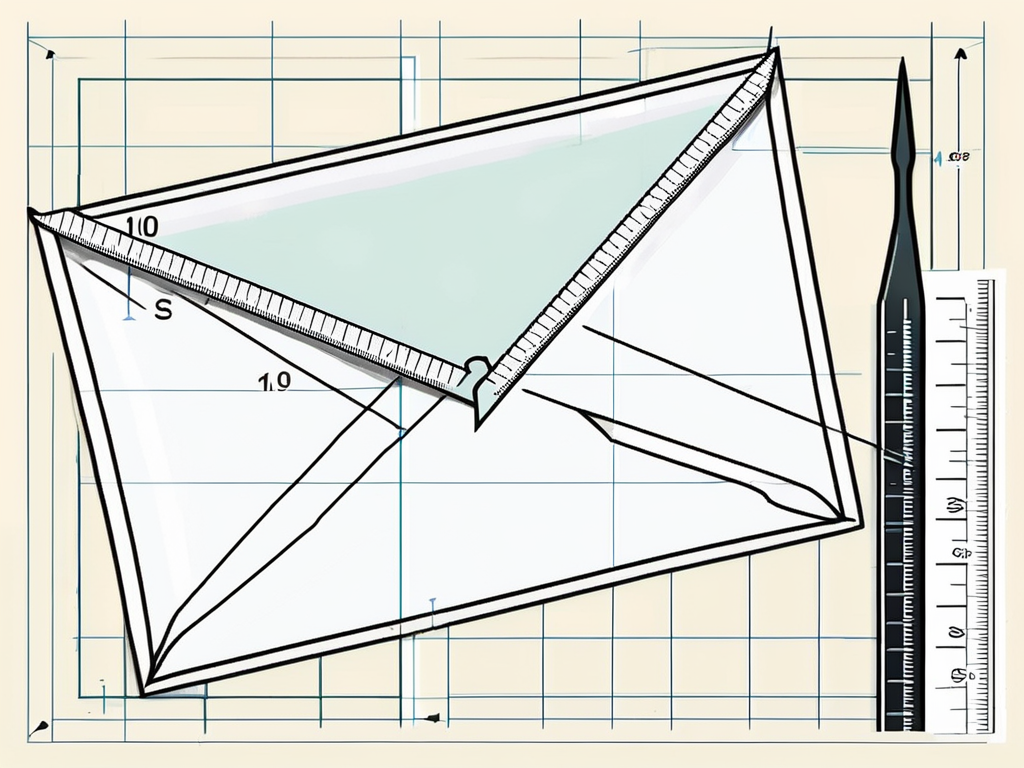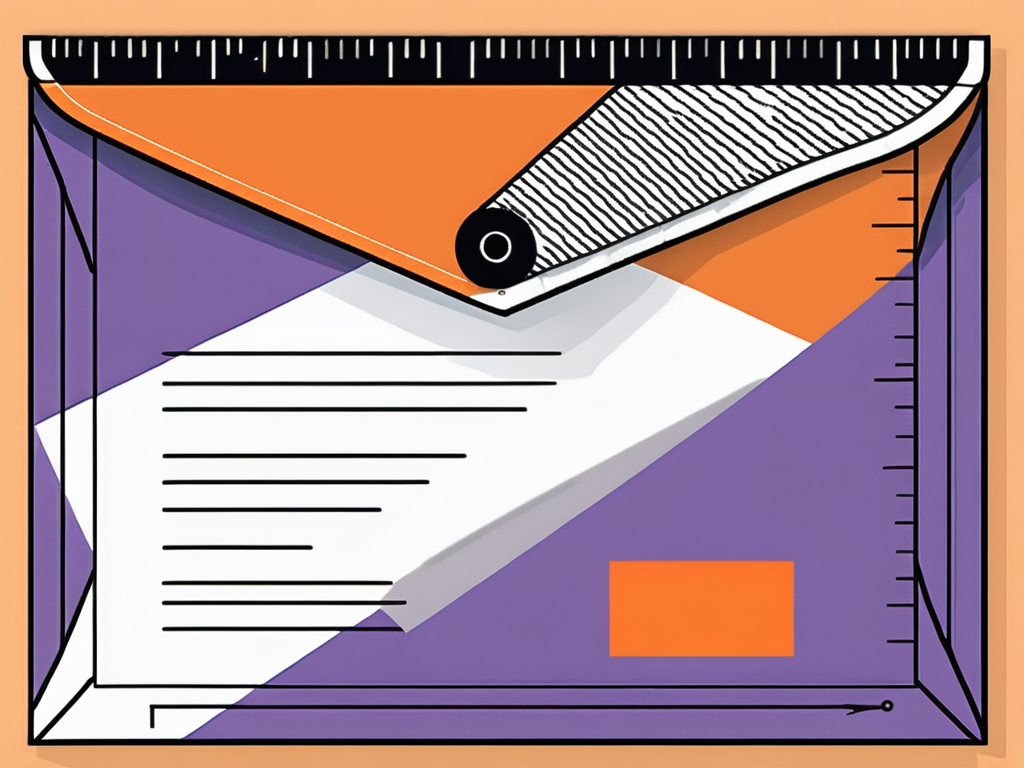“Measure twice, ship once.”
Shipping can be a tricky business. Whether you’re sending a gift to a loved one or mailing out products for your business, getting accurate measurements is crucial.
One small miscalculation can lead to oversized packages and unexpected shipping costs. That’s why it’s important to know how to measure a padded envelope properly before you ship it.
Table of Contents
ToggleStep-by-Step Guide to Measuring a Padded Envelope for Shipping
Now it’s time to put those tools to good use and measure your padded envelope accurately. Follow this step-by-step guide to ensure you get accurate measurements for shipping.
When measuring a padded envelope, precision is key to ensuring that your package is properly classified for shipping.
By accurately measuring the dimensions of your envelope, you can avoid any unexpected surcharges or delays in delivery. Let’s delve deeper into the process of measuring a padded envelope to guarantee a smooth shipping experience.
Need expert assistance? 3PL services in the USA help businesses optimize packaging to prevent overcharges and shipping errors.
1. Measuring the Length and Width
Necessary first step is always knowing the exact length and width of the envelope.
- Start by laying your padded envelope flat on a surface. Take your ruler and measure the length from one end to the other. Write down the measurement.
- Next, measure the width from side to side and record that measurement as well. Remember to measure the dimensions at their widest points, capturing any bulges or irregular shapes.
It’s crucial to ensure that your measurements are taken with precision, as even a slight miscalculation can impact the shipping costs associated with your padded envelope. By measuring the length and width accurately, you can provide shipping carriers with the necessary information to determine the appropriate shipping rates for your package.

2. Measuring the Thickness
Once you have the length and width measurements, it’s time to measure the thickness.
- Close the padded envelope and lay it on its side.
- Position your ruler perpendicular to the envelope and measure the thickness from the highest point to the lowest point. Be sure to account for any additional padding or bulky items inside the envelope.
Measuring the thickness of your padded envelope is essential for determining the overall size of your package. Shipping carriers use this dimension to assess the package’s volume and ensure that it meets their size restrictions. By accurately measuring the thickness, you can avoid any discrepancies in shipping costs and expedite the delivery process for your package.
3. Considering the Flap and Closure
When measuring a padded envelope, it’s important to account for the flap and closure. The flap is the extended part that seals the envelope, which typically adds extra length to one side. To ensure accurate measurements, measure the envelope with the flap open and include the flap length in your total measurement.
This helps in determining the full size of the envelope, especially if you’re planning to use every inch of available space for your items. Also, consider the type of closure (e.g., peel-and-seal, clasp) as it may impact the final dimensions once sealed.
4. Allowing for Expansion
Padded envelopes are designed to accommodate items of varying thicknesses. When measuring, consider the potential expansion of the envelope once items are placed inside.
If you’re shipping bulkier home goods items or some things that are irregularly shaped, allow extra room in your measurements to account for this. This ensures the envelope can close properly without overstuffing, which can compromise the integrity of the packaging and the protection of the contents.
5. Double-Checking Your Measurements
Accuracy is key in measuring padded envelopes to avoid issues during shipping. Double-check your measurements by repeating the process and comparing results.
Measure the length, width, and thickness multiple times to ensure consistency. This practice helps to catch any errors and guarantees that you have the correct dimensions before proceeding with packaging and shipping.
Improperly measured packages can result in costly fees. Avoid unnecessary charges by reading how to avoid hidden shipping fees when mailing packages.
6. Recording and Using Your Measurements
Once you have accurately measured your padded envelope, record the dimensions for future reference. Keep a log of the measurements, including details like the flap length and potential expansion allowance.
These recorded measurements will be useful for purchasing the right-sized envelopes in the future and ensuring you always choose the correct size for your shipping needs.
Additionally, use these measurements to:
- calculate shipping costs
- select the appropriate shipping method
Interpreting Your Measurements
Now that you have your measurements, it’s important to understand how to interpret them correctly for shipping purposes.

Having accurate measurements is crucial in the shipping industry as it ensures that packages are classified correctly and that the right shipping rates are applied. Whether you are sending a small padded envelope or a large box, knowing how to measure and interpret those dimensions can save you time and money in the long run.
Accurately measuring packages helps e-commerce businesses reduce shipping costs. Our cost-effective e-commerce fulfillment services ensure proper package sizing, optimized rates, and seamless shipping.
How to Read Measurements Correctly
When recording your measurements, it’s essential to follow the standard format of length x width x thickness. For example, if your padded envelope measures 8 x 6 x 2 inches, you would write it as 8″ x 6″ x 2″. This format ensures clarity and consistency when providing measurements to carriers or calculating shipping rates.
It’s also important to note that some carriers may have specific guidelines on how measurements should be taken. For instance, they may require measurements to be rounded up to the nearest inch or centimeter. Being aware of these guidelines can help you provide accurate information and avoid any discrepancies in shipping costs.
Converting Measurements to Shipping Rates
To determine the shipping rate for your padded envelope, you’ll need to contact your shipping carrier or use their online rate calculator. Most carriers provide rate calculators on their websites where you can input the dimensions and weight of your package. These tools instantly generate the shipping cost based on your measurements, allowing you to make an informed decision.
Additionally, understanding how dimensional weight factors into cost can be beneficial and can actually help you reduce shipping costs. Dimensional weight is a pricing technique used by carriers to account for the amount of space a package occupies in relation to its actual weight.
By knowing how to calculate dimensional weight and compare it to the actual weight of your package, you can ensure that you are not overpaying for shipping.
Shipping carriers use size, weight, and dimensional weight to calculate costs. Learn more about how to calculate shipping costs for e-commerce businesses and how to optimize expenses.
Ensuring Precision: The Key to Successful Shipping
Accurate measurements are the foundation for successful shipping. By understanding why size matters and how to measure your padded envelope correctly, you can save yourself from unnecessary expenses and ensure your packages arrive at their destination without complications. So remember, measure twice, ship once!
Need expert logistics support? Get in touch with us today to simplify your fulfillment process.






